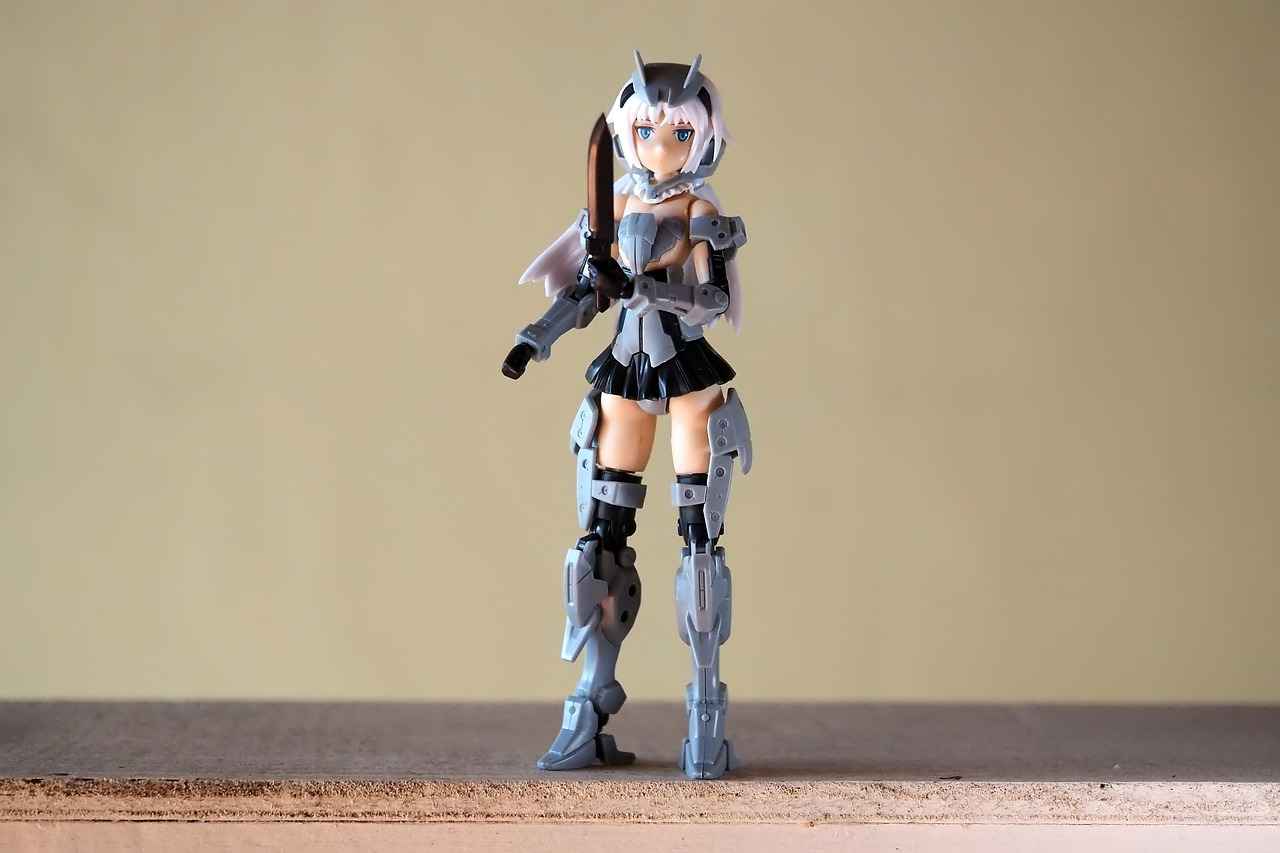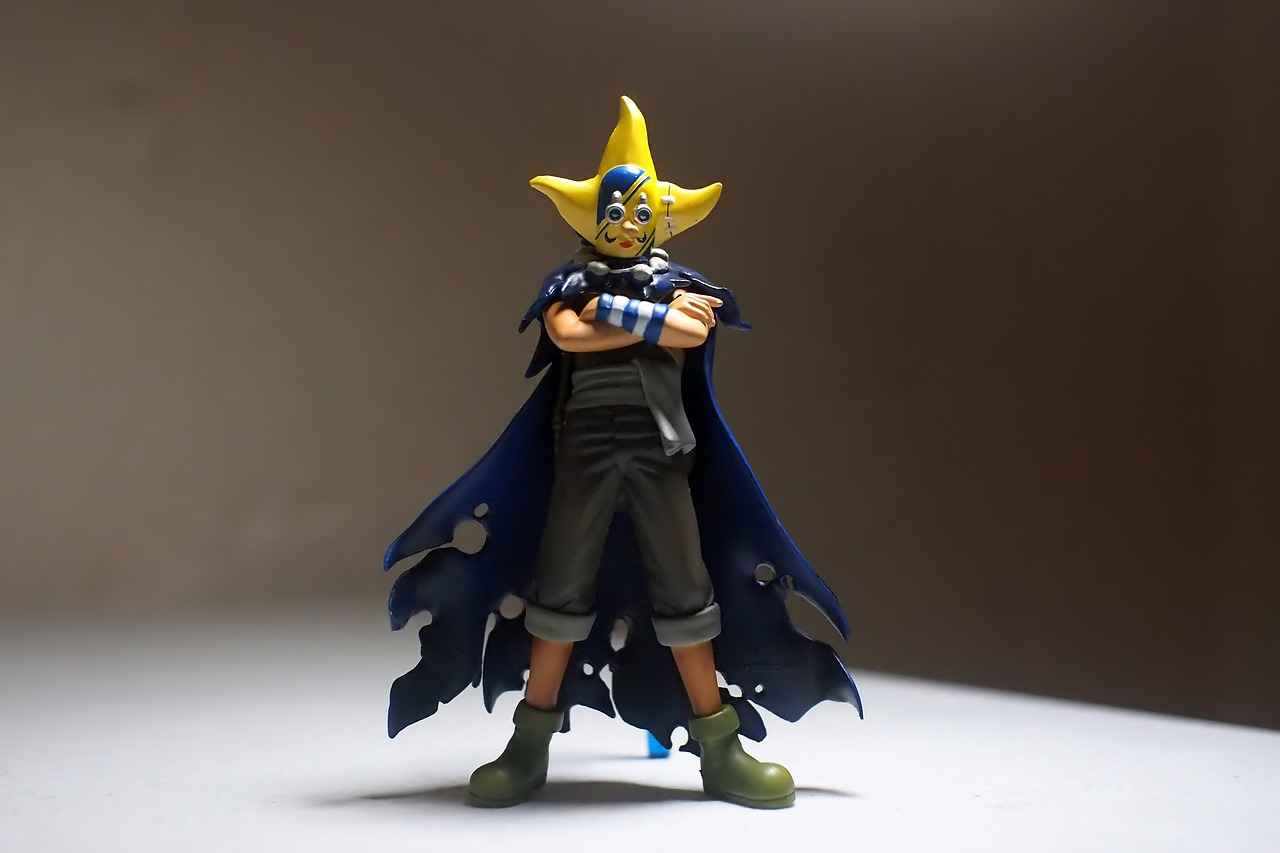This article delves into the most iconic and breathtaking transformations in anime, highlighting their significance within the narratives and their profound impact on fans worldwide. Transformations in anime often serve as pivotal moments that not only elevate the stakes of the story but also deepen our connection to the characters.
- Goku’s Super Saiyan Transformation: This transformation is not just a display of power; it symbolizes the eternal struggle between good and evil, showcasing Goku’s determination to protect his loved ones.
- Naruto’s Sage Mode: This transformation signifies Naruto’s growth as a ninja, blending natural energy with his own abilities, marking a crucial evolution in his character arc.
- Sailor Moon’s Magical Transformations: Each transformation highlights the themes of love and friendship, making them iconic moments in the magical girl genre.
- Edward Elric’s Alchemical Transformation: Representing sacrifice and the quest for redemption, Edward’s transformations are vital to his journey in Fullmetal Alchemist.
- Ichigo Kurosaki’s Bankai Transformation: This marks a significant turning point in Ichigo’s journey as a Soul Reaper, showcasing his growth and the evolution of his powers.
- Monkey D. Luffy’s Gear Transformations: Luffy’s creative and adaptable Gear techniques reflect his growth as a pirate, allowing him to confront increasingly powerful foes.
Transformations in anime are not merely visual spectacles; they embody the essence of character development and thematic depth. Each transformation resonates with viewers, often becoming a symbol of hope, strength, and perseverance. As fans witness these changes, they become emotionally invested in the characters’ journeys, making these moments unforgettable.
In conclusion, the epic transformations in anime serve as a testament to the creativity and storytelling prowess of the medium. They not only enhance the narrative but also forge a lasting bond between the characters and their audience, solidifying their place in anime history.

1. Goku’s Super Saiyan Transformation
The Most Epic Transformations in Anime History
This article explores the most iconic and breathtaking transformations in anime, highlighting their significance within the narratives and their impact on fans worldwide.
Goku’s transformation into a Super Saiyan is not just a pivotal moment in the Dragon Ball Z series; it is a landmark event in the world of anime as a whole. This transformation represents the triumph of good over evil and showcases the immense power that can be derived from determination and rage. When Goku first transforms, the scene is filled with intense energy, symbolizing his emotional turmoil and the stakes of the battle against formidable foes like Frieza.
The Super Saiyan transformation is characterized by Goku’s golden hair, green eyes, and an aura of immense power. This iconic transformation has become a symbol of hope and strength for many fans, inspiring countless memes and references in popular culture. The moment he transforms is not just about physical strength; it also represents Goku’s journey and growth as a character, showcasing his unwavering spirit in the face of adversity.
Moreover, Goku’s transformation into a Super Saiyan has set a precedent for future transformations in anime, influencing characters across various series to adopt similar power-ups. The emotional weight behind this transformation resonates deeply with audiences, making it a defining moment that highlights the importance of inner strength and the will to fight for what is right.
As the series progresses, Goku continues to evolve, introducing new transformations that build upon the legacy of the Super Saiyan. Each new form reflects his ongoing struggle and determination to protect his loved ones, ensuring that the essence of the Super Saiyan remains a vital part of his character’s journey.
In conclusion, Goku’s Super Saiyan transformation is more than just a visual spectacle; it is a powerful narrative device that captures the essence of heroism, making it one of the most memorable moments in anime history.

2. Naruto’s Sage Mode
Naruto Uzumaki’s transformation into Sage Mode is not just a remarkable power-up; it represents a significant milestone in his journey as a ninja. This transformation allows Naruto to tap into the natural energy surrounding him, blending it seamlessly with his own chakra. As a result, he gains enhanced physical abilities, heightened senses, and a profound connection to nature, which ultimately elevates his combat skills to unprecedented levels.
The path to achieving Sage Mode is fraught with challenges that test Naruto’s determination and resilience. His training at Mount Myoboku under the tutelage of Fukasaku is a pivotal aspect of this journey. Here, he learns to harness natural energy, a skill that requires a delicate balance and immense focus. This training is not merely about gaining power; it is a transformative experience that shapes Naruto into a more mature and capable ninja.
- Training with Fukasaku: Under Fukasaku’s guidance, Naruto learns the intricacies of Sage Mode, which includes the ability to sense and utilize natural energy.
- Overcoming Obstacles: Throughout his training, Naruto faces numerous hurdles, including mastering the synchronization of natural energy with his own chakra.
The impact of Sage Mode on Naruto’s fighting style is profound. This transformation allows him to take on formidable opponents with newfound confidence and strength. The ability to enter Sage Mode not only enhances his physical prowess but also expands his tactical options in battle, making him a formidable force within the Naruto universe.
In conclusion, Naruto’s Sage Mode transformation is a testament to his growth as a ninja. It symbolizes his journey from a determined young boy to a powerful and skilled warrior, embodying the essence of perseverance and the importance of mastering one’s abilities. This transformation not only enriches the narrative of the series but also resonates deeply with fans, making it one of the most iconic moments in anime history.
2.1 The Journey to Sage Mode
The Journey to Sage Mode is a pivotal chapter in Naruto Uzumaki’s evolution as a ninja. This transformation not only showcases Naruto’s growth but also highlights the values of perseverance and dedication.
Throughout his journey, Naruto faces numerous challenges that test his resolve and skill. One of the most significant aspects of mastering Sage Mode is the ability to harness natural energy. This unique power allows Naruto to enhance his physical abilities and sensory perception, making him a formidable opponent in battle.
To achieve this transformation, Naruto undergoes rigorous training under Fukasaku, a wise toad sage from Mount Myoboku. This training is not just about physical strength; it also involves a deep understanding of the balance between natural energy and his own chakra. The process is intricate and requires immense focus, as even a slight miscalculation can lead to failure.
- Training Regimen: Naruto learns various techniques, including how to enter Sage Mode efficiently and maintain it during combat.
- Overcoming Fear: Initially, Naruto struggles with the concept of natural energy, fearing he may not be able to control it.
- Support from Friends: Throughout this journey, Naruto’s friends and allies provide unwavering support, motivating him to push through his doubts.
As Naruto progresses, he learns to utilize Sage Mode in conjunction with his other abilities, creating a unique fighting style that incorporates both his ninja skills and the powers of nature. This transformation is not merely about gaining strength; it signifies Naruto’s maturation as a character and his understanding of the world around him.
Ultimately, the mastery of Sage Mode equips Naruto with the tools necessary to confront powerful adversaries and protect those he loves. This transformation marks a new chapter in his journey, solidifying his status as one of the most powerful ninjas in the Naruto universe.
2.1.1 Training with Fukasaku
Training with Fukasaku is a significant chapter in Naruto Uzumaki’s journey towards mastering Sage Mode. Located in the mystical Mount Myoboku, this training not only enhances Naruto’s combat abilities but also deepens his connection with nature. Under the guidance of Fukasaku, a wise and powerful sage, Naruto learns to harness natural energy, a vital component that allows him to tap into the immense power of Sage Mode.
The training process is rigorous and demanding. Naruto must learn to balance his chakra with the natural energy around him. This balance is crucial; even the slightest miscalculation can lead to disastrous results. Fukasaku emphasizes the importance of patience and focus, teaching Naruto that true strength comes from understanding and respecting the world around him.
- Understanding Natural Energy: Naruto learns to sense the flow of natural energy, a skill that allows him to gather this energy and combine it with his own chakra.
- Mastering Sage Techniques: Fukasaku introduces Naruto to various Sage techniques that enhance his physical abilities and perception, making him a formidable opponent.
- Overcoming Challenges: Throughout his training, Naruto faces numerous obstacles, including self-doubt and the pressure to succeed, which ultimately contribute to his character growth.
As Naruto progresses, he begins to experience the profound effects of Sage Mode. His enhanced sensory perception allows him to detect enemies from great distances and anticipate their moves, making him a more strategic fighter. The training not only boosts his physical capabilities but also instills a sense of responsibility as he learns to use his newfound powers wisely.
In conclusion, training with Fukasaku in Mount Myoboku is a transformative experience for Naruto. It is a journey of self-discovery, resilience, and mastery that elevates him to new heights as a ninja. This pivotal moment not only shapes his abilities but also solidifies his role as a protector of the ninja world.
2.1.2 Overcoming Obstacles
Overcoming Obstacles is a critical theme in Naruto’s journey, particularly during his training to master Sage Mode. This transformation is not merely a display of power; it represents a significant milestone in Naruto’s growth as a ninja and as an individual. Throughout this arduous process, he encounters a series of challenges that test his resolve and determination.
One of the most significant obstacles Naruto faces is the mastery of natural energy. Unlike chakra, natural energy is a different form of energy that exists in the environment, and learning to harness it requires immense focus and discipline. Naruto must learn to blend this energy with his own chakra to achieve Sage Mode, a feat that many fail to accomplish.
- Training Regimen: Under the guidance of Fukasaku, Naruto undergoes rigorous training at Mount Myoboku, where he learns the intricacies of sensing and utilizing natural energy.
- Time Constraints: Naruto has a limited time to gather natural energy before it overwhelms him, adding pressure to master the technique quickly.
- Physical Limitations: His body struggles to adapt to the overwhelming power of Sage Mode, leading to several failures and setbacks during his training.
Each of these challenges serves to highlight Naruto’s resilience. Instead of succumbing to frustration, he channels his failures into motivation, pushing himself beyond his limits. This determination not only aids him in overcoming the obstacles of Sage Mode training but also reflects his growth as a character who refuses to give up, no matter the odds.
Ultimately, Naruto’s journey through these challenges culminates in his successful transformation into Sage Mode, marking a pivotal moment that enhances his capabilities and solidifies his status as a formidable ninja. This evolution not only showcases his strength but also emphasizes the importance of perseverance and personal growth in the face of adversity.
2.2 The Impact of Sage Mode
The Impact of Sage Mode
The introduction of Sage Mode in the Naruto series is a transformative moment that significantly enhances Naruto Uzumaki’s combat abilities and overall character development. This transformation is not merely a power boost; it represents a profound evolution in Naruto’s fighting style, allowing him to confront some of the most formidable foes in the Naruto universe.
In Sage Mode, Naruto gains the ability to harness natural energy, which he combines with his own chakra. This unique blend enhances his physical strength, speed, and reflexes, making him a much more formidable opponent. With this transformation, Naruto can perceive the flow of chakra around him, granting him heightened awareness during battles. This new perspective allows him to anticipate and counterattack effectively, showcasing a more strategic approach to combat.
One of the most notable aspects of Sage Mode is its impact on Naruto’s signature techniques. For instance, his Rasengan evolves into the more powerful Sage Art: Super Rasengan, which is capable of immense destructive force. Additionally, the introduction of Senjutsu techniques allows Naruto to utilize powerful jutsu that were previously beyond his reach, further solidifying his reputation as a skilled ninja.
Moreover, Sage Mode serves as a pivotal moment in Naruto’s journey, symbolizing his growth and maturity as a character. It reflects his dedication to training and his willingness to embrace new challenges. This transformation not only enhances his fighting capabilities but also reinforces his role as a protector of his village and allies.
In conclusion, the impact of Sage Mode on Naruto’s fighting style is profound. It not only elevates his combat prowess but also signifies his evolution as a character, allowing him to face greater challenges and emerge victorious. Sage Mode is a testament to Naruto’s resilience and determination, solidifying his status as one of the most powerful ninjas in the Naruto universe.

3. Sailor Moon’s Transformations
Sailor Moon’s magical transformations are a defining aspect of the series, captivating audiences with their stunning visuals and deep symbolism. These transformations do not merely serve as a spectacle; they embody the strength of friendship and the power of love. Each transformation is a testament to the characters’ growth and the bonds they share, making these moments truly iconic in the magical girl genre of anime.
In Sailor Moon, every transformation sequence is rich with meaning. As the characters transform, they not only gain new powers but also reflect their inner strength and resolve. The vibrant animations and catchy transformation phrases enhance the emotional impact, making each moment a celebration of their unity and purpose. For instance, when Usagi transforms into Sailor Moon, it signifies her acceptance of her role as a guardian, embracing her destiny to protect the world.
The influence of Sailor Moon extends beyond its own narrative. The series has set a standard for future magical girl anime, inspiring countless creators and fans alike. Its transformative sequences have become a cultural phenomenon, resonating with audiences across generations. The themes of empowerment, friendship, and love in these transformations have paved the way for discussions about gender roles and representation in media.
- Sailor Moon’s First Transformation: This moment marked the beginning of Usagi’s journey, showcasing her transition from an ordinary girl to a powerful warrior.
- Sailor Mars’ Transformation: The fiery and intense nature of this transformation emphasizes her strong-willed personality and commitment to her friends.
- Sailor Saturn’s Transformation: This transformation is shrouded in mystery, symbolizing both destruction and rebirth, highlighting the duality of her character.
In conclusion, Sailor Moon’s transformations are not just a visual delight but are deeply intertwined with the series’ core themes. They serve as powerful reminders of the importance of friendship and love in overcoming challenges, making them unforgettable moments in anime history.
3.1 The Essence of Transformation
The Essence of Transformation in Sailor Moon is a captivating aspect that not only defines the characters but also embodies the core themes of the series. Each transformation sequence serves as a visual and narrative representation of the character’s growth, personality, and the bonds they share with one another.
In Sailor Moon, the transformations are more than just magical moments; they symbolize empowerment and the strength found in unity. Each Sailor Guardian undergoes a unique transformation that highlights their individual traits while simultaneously reinforcing their collective purpose. For instance, when Usagi Tsukino transforms into Sailor Moon, it marks her evolution from a timid girl into a courageous leader, ready to fight for love and justice.
- Character Development: The transformations reveal the characters’ inner strengths and vulnerabilities, showcasing their journey from self-doubt to confidence.
- Empowerment Themes: Each transformation is a celebration of personal power, emphasizing that true strength comes from within and is amplified through friendship.
- Visual Spectacle: The dazzling visuals of the transformation sequences captivate viewers, making them iconic moments that resonate across generations.
The impact of these transformations extends beyond the screen. They have inspired countless fans to embrace their own identities and find strength in their friendships. This cultural significance is evident in the way Sailor Moon has influenced other magical girl series, establishing a legacy that continues to thrive.
In conclusion, the essence of transformation in Sailor Moon is a profound exploration of character growth and the power of unity. It reinforces the message that together, the Sailor Guardians can overcome any obstacle, making their transformations not just magical, but also deeply meaningful.
3.2 Cultural Impact of Sailor Moon
Sailor Moon has left an indelible mark on the landscape of anime and popular culture, particularly through its transformative sequences. These moments are not just visual spectacles; they carry profound meanings and emotions that resonate with fans around the world. The show’s ability to blend action, friendship, and empowerment has set a benchmark for future magical girl series.
The cultural impact of Sailor Moon can be seen in various aspects:
- Inspiration for Future Generations: The transformative sequences of Sailor Moon have influenced countless anime and manga, establishing a template for future magical girl series. Shows like Cardcaptor Sakura and Puella Magi Madoka Magica have drawn inspiration from Sailor Moon’s unique approach to transformation, incorporating similar themes of friendship and courage.
- Empowerment and Identity: Each transformation not only enhances the characters’ abilities but also serves as a moment of self-discovery and empowerment. This has encouraged viewers, particularly young girls, to embrace their identities and strengths, fostering a sense of confidence.
- Global Reach: Sailor Moon has transcended cultural boundaries, gaining a massive following in various countries. Its themes of love, justice, and friendship resonate universally, making it a beloved classic.
- Merchandising and Fandom: The popularity of Sailor Moon has led to an extensive range of merchandise, from toys to clothing, which has further cemented its place in pop culture. The fandom surrounding Sailor Moon is vibrant and active, with conventions, fan art, and online communities celebrating the series.
In conclusion, the transformative sequences of Sailor Moon have not only defined a genre but have also empowered audiences, inspired future creators, and fostered a global community. Its legacy continues to thrive, proving that the magic of transformation is timeless.

4. Edward Elric’s Alchemical Transformation
In the realm of anime, few transformations resonate as deeply as Edward Elric’s alchemical transformation in Fullmetal Alchemist. This character’s journey is not merely about the physical changes he undergoes through alchemy; it encapsulates profound themes of sacrifice and the relentless pursuit of redemption. Edward’s evolution serves as a powerful narrative device that enriches the story, making it a cornerstone of the series.
Edward’s understanding of alchemy is deeply tied to the principle of equivalent exchange, which dictates that in order to gain something, one must sacrifice something of equal value. This philosophy challenges Edward at every turn, forcing him to confront the moral implications of his actions. His transformations are not just physical; they are laden with emotional weight and ethical dilemmas that shape his character.
Throughout the series, several pivotal transformations highlight Edward’s growth and the overarching themes of the narrative. These transformations include:
- Human Transmutation: Edward’s initial attempt to bring back his mother results in devastating consequences, marking the beginning of his quest for redemption.
- Arm Reconstruction: Losing his arm in the transmutation process, Edward’s decision to replace it with a mechanical automail arm symbolizes his willingness to sacrifice for his goals.
- Final Confrontation: In the climactic moments of the series, Edward’s ultimate transformation reflects his acceptance of the past and his determination to forge a new future.
Each transformation not only advances the plot but also serves as a reflection of Edward’s inner turmoil and his ongoing quest for knowledge and understanding. The sacrifices he makes are not just physical but emotional, impacting those around him and driving the narrative forward.
In conclusion, Edward Elric’s alchemical transformation is a testament to the intricate storytelling found in Fullmetal Alchemist. It illustrates the delicate balance between power and responsibility, making his journey relatable and inspiring to fans worldwide.
4.1 The Philosophy of Alchemy
The Philosophy of Alchemy is a central theme in Fullmetal Alchemist, deeply intertwined with the character development of Edward Elric. Throughout the series, Edward’s understanding of alchemy evolves significantly, reflecting not only his personal growth but also the moral complexities associated with it.
Initially, Edward views alchemy as a means to an end, a tool to achieve his goals of restoring his brother Alphonse’s body and bringing back their mother. However, as the story progresses, he comes to realize that alchemy is not just about transformation; it is fundamentally about balance, sacrifice, and the value of human life.
Edward learns that every act of creation requires a corresponding sacrifice, a principle known as the Law of Equivalent Exchange. This realization forces him to confront the ethical implications of his actions. For instance, his early attempts to resurrect his mother lead to devastating consequences, highlighting the dangers of playing god and the limits of human knowledge.
As he navigates the complexities of alchemy, Edward’s character is shaped by the choices he makes. He grapples with the moral dilemmas of using alchemy for personal gain versus the greater good. This internal struggle is depicted through his relationships with other characters, particularly with those who have suffered due to the misuse of alchemical power.
Ultimately, Edward’s journey is about understanding the true essence of alchemy. He learns that true strength lies not in the ability to transform matter, but in the capacity to accept loss, embrace humanity, and make sacrifices for others. This philosophical evolution is what makes Edward Elric one of the most compelling characters in anime, as he embodies the struggle between ambition and morality.
4.2 Key Transformations in Fullmetal Alchemist
Key Transformations in Fullmetal Alchemist
In Fullmetal Alchemist, the narrative is rich with profound transformations that not only shape the characters but also reflect the series’ central themes of sacrifice, loss, and the relentless pursuit of knowledge. Each transformation is a pivotal moment that deepens the viewer’s understanding of the characters’ motivations and the moral complexities they face.
- Edward Elric’s Initial Transformation: Edward’s journey begins with a tragic event that leads to the loss of his brother Alphonse’s body. This moment sets the stage for their quest to restore what they have lost, emphasizing the theme of sacrifice.
- Alphonse Elric’s Transformation: Alphonse’s existence as a soul bound to a suit of armor serves as a constant reminder of the consequences of their actions. His transformation into a more conscious being highlights the series’ exploration of identity and humanity.
- Roy Mustang’s Evolution: As a character, Roy Mustang undergoes significant changes, driven by his desire for justice and the burden of his past. His transformation from a soldier to a leader showcases the impact of war and the quest for redemption.
- Scar’s Redemption: Initially portrayed as an antagonist, Scar’s transformation reveals the complexity of his character. His journey towards understanding and forgiveness illustrates the series’ themes of redemption and the cyclical nature of hatred.
These transformations are not merely physical; they represent deep emotional and philosophical shifts within the characters. Each moment is crafted to resonate with the audience, making the themes of Fullmetal Alchemist not only relatable but also profoundly impactful.
The series invites viewers to reflect on the nature of humanity, the cost of knowledge, and the sacrifices that come with personal growth. As the characters evolve, so too does the audience’s understanding of the intricate tapestry of their lives.

5. Ichigo Kurosaki’s Bankai Transformation
Ichigo Kurosaki’s transformation into Bankai in Bleach is not just a pivotal moment in the series; it symbolizes a profound evolution in his character and abilities as a Soul Reaper. This transformation showcases Ichigo’s relentless determination and the culmination of his training, marking a significant turning point in his journey.
The ability to achieve Bankai represents the ultimate mastery of a Soul Reaper’s zanpakuto. For Ichigo, this transformation is a testament to his growth and resilience. It allows him to access a new level of power, enabling him to confront formidable foes that threaten the balance of the Soul Society and the human world. Bankai is not merely a power-up; it embodies Ichigo’s commitment to protecting his friends and fulfilling his duties as a Soul Reaper.
Ichigo’s Bankai transformations lead to some of the most memorable battles in Bleach. Notable confrontations, such as his battles against Grimmjow Jaegerjaquez and Aizen Sosuke, highlight the emotional stakes and the weight of Ichigo’s choices. Each battle showcases not only his physical prowess but also his growth as a character, emphasizing the internal struggles he faces as he embraces his role as a protector.
Throughout the series, Ichigo’s Bankai evolves, reflecting his personal growth and the challenges he overcomes. This evolution is marked by his increasing understanding of his zanpakuto’s true nature and his ability to harness its full potential. As Ichigo faces greater threats, his Bankai becomes a symbol of hope and strength, inspiring those around him.
In conclusion, Ichigo Kurosaki’s Bankai transformation is a defining moment in Bleach, representing not only his growth as a Soul Reaper but also the themes of sacrifice, friendship, and determination. This transformation resonates with fans and serves as a powerful reminder of the journey Ichigo undertakes throughout the series.
5.1 The Significance of Bankai
The Bankai transformation in the anime Bleach is not merely a display of power; it embodies the essence of Ichigo Kurosaki’s journey as a Soul Reaper. Achieving Bankai signifies a profound evolution in Ichigo’s abilities, representing the peak of his training, determination, and emotional growth. This transformation allows him to confront formidable foes and protect his loved ones, making it a pivotal milestone in the series.
Bankai, the final and most powerful form of a Soul Reaper’s zanpakutō, is a testament to the bond between Ichigo and his sword, Zangetsu. This bond deepens through rigorous training and intense battles, ultimately culminating in the unlocking of Bankai. The sheer magnitude of power that Bankai provides not only enhances Ichigo’s combat abilities but also serves as a reflection of his unwavering resolve to safeguard those he cherishes.
In his battles, Ichigo’s Bankai manifests in various forms, each showcasing unique abilities that adapt to the challenges he faces. For instance, his initial Bankai transformation grants him incredible speed and strength, allowing him to overwhelm even the most daunting adversaries. Additionally, Bankai serves as a narrative device that highlights the stakes of each confrontation, adding emotional depth to the battles. The weight of Ichigo’s responsibilities as a protector is palpable, as he fights not just for victory but to honor the bonds he has forged.
Furthermore, the significance of Bankai extends beyond Ichigo himself. It represents the broader themes of growth, sacrifice, and the relentless pursuit of strength found throughout Bleach. As Ichigo evolves, so too does his understanding of what it means to wield such power, making his journey relatable to fans who resonate with the challenges of personal growth.
In conclusion, the ability to achieve Bankai is a defining aspect of Ichigo Kurosaki’s character arc. It symbolizes the culmination of his experiences, struggles, and triumphs, allowing him to rise as a formidable force in the battle against darkness. This transformation not only enhances the narrative of Bleach but also solidifies Ichigo’s legacy as one of anime’s most iconic heroes.
5.2 Iconic Battles Featuring Bankai
Iconic Battles Featuring Bankai
In the world of Bleach, Ichigo Kurosaki’s Bankai transformations are not merely power-ups; they are pivotal moments that elevate the stakes of each battle. These transformations often occur during climactic confrontations against formidable foes, showcasing not just Ichigo’s growth as a Soul Reaper, but also the emotional weight that accompanies each fight.
- 1. Ichigo vs. Byakuya Kuchiki
This battle is one of the first major showcases of Ichigo’s Bankai, Tensa Zangetsu. The clash against Byakuya, a captain with immense skill, highlights Ichigo’s determination to protect his friends and his growth as a fighter. The emotional intensity of this fight is amplified by Byakuya’s past and his relationship with Ichigo.
- 2. Ichigo vs. Grimmjow Jaegerjaquez
In his battle against Grimmjow, Ichigo’s Bankai transformation serves as a testament to his resolve. This fight is not only about physical strength but also about Ichigo’s desire to save his friends and prove himself. The raw emotions displayed during this confrontation resonate deeply with fans, making it a memorable moment in the series.
- 3. Ichigo vs. Aizen
The climactic battle against Sosuke Aizen is perhaps the most significant display of Ichigo’s Bankai. Aizen, being one of the most powerful antagonists, pushes Ichigo to his limits. The struggle against Aizen represents not only a physical battle but also a fight against despair, showcasing Ichigo’s evolution and the culmination of his training.
Each of these battles emphasizes the importance of Ichigo’s Bankai transformations, illustrating how they are intertwined with the emotional narratives of the characters involved. The stakes are always high, and the consequences of these battles resonate throughout the series, making them unforgettable moments for fans.

6. Monkey D. Luffy’s Gear Transformations
Monkey D. Luffy, the charismatic captain of the Straw Hat Pirates in One Piece, has captivated fans with his unique and innovative Gear transformations. These transformations not only enhance his combat abilities but also symbolize his growth as a pirate and leader. Luffy’s adaptability in battle showcases his creativity and determination to protect his friends while pursuing his dreams of becoming the Pirate King.
6.1 The Evolution of Gear Techniques
Each Gear transformation introduces a myriad of new abilities and strategies. For instance, Gear Second enhances Luffy’s speed and strength by pumping his blood at an accelerated rate, allowing him to take on formidable foes. In contrast, Gear Third allows him to inflate his bones, granting him immense power for devastating attacks. The introduction of Gear Fourth further showcases Luffy’s ingenuity, combining speed, power, and flexibility to create a formidable fighting style.
6.2 The Impact on One Piece’s Narrative
Luffy’s transformations are pivotal to the narrative of One Piece. They not only enhance his combat prowess but also drive the plot forward by influencing his relationships with allies and enemies alike. Each Gear transformation often comes at a critical moment, highlighting Luffy’s growth and the stakes involved in his adventures. His ability to adapt and evolve in response to challenges reflects the themes of friendship, perseverance, and the pursuit of dreams that are central to the series.
Conclusion
In conclusion, Monkey D. Luffy’s Gear transformations are a testament to his character development and the overarching narrative of One Piece. As he faces increasingly powerful foes, Luffy’s creativity and adaptability shine through, making his journey not only exciting but also deeply resonant with fans around the world.
6.1 The Evolution of Gear Techniques
The Evolution of Gear Techniques in One Piece is a testament to Monkey D. Luffy’s relentless spirit and creativity as a pirate. Each transformation not only enhances his combat abilities but also introduces unique strategies that reflect his growth and determination to protect his friends. This section delves into the various Gear techniques that Luffy has developed over time, showcasing his ingenuity and the impact these transformations have on his journey.
- Gear Second: This technique allows Luffy to increase his speed and power by pumping his blood at an accelerated rate, giving him the ability to outmaneuver and outpace his opponents.
- Gear Third: By inflating his bones, Luffy can deliver massive attacks that can take down even the strongest foes. This transformation showcases his strategic use of size and strength in battle.
- Gear Fourth: A significant leap in Luffy’s abilities, Gear Fourth combines the power of Haki with his rubbery physique, enabling him to unleash devastating attacks while enhancing his agility and defense.
Each Gear transformation is not merely a display of power but a reflection of Luffy’s innate ability to adapt to the challenges he faces. His determination to protect his crew and achieve his dreams is evident in how he innovates during battles, often surprising his enemies with unexpected tactics.
Furthermore, Luffy’s Gear transformations have a profound impact on the narrative of One Piece. They serve as pivotal moments that drive the plot forward, influencing his relationships with other characters and the challenges he must overcome. The evolution of his Gear techniques illustrates not only his physical growth but also his emotional and strategic development as a leader.
In conclusion, Luffy’s Gear transformations are a vital aspect of his character and the overarching story of One Piece. They exemplify his ingenuity and unwavering determination, making each battle a thrilling experience for fans and a significant part of his journey as a pirate.
6.2 The Impact on One Piece’s Narrative
Monkey D. Luffy’s Gear transformations are a cornerstone of his character development and play a crucial role in the overarching narrative of One Piece. Each transformation not only enhances his combat capabilities but also serves as a narrative device that propels the story forward.
As Luffy encounters increasingly formidable foes, his Gear transformations reflect his determination and adaptability. These transformations, such as Gear Second, Gear Third, and the more recent Gear Fourth, showcase his ability to think strategically in battles. For instance, Gear Second allows Luffy to increase his speed and strength, enabling him to confront opponents that would otherwise overpower him. This not only heightens the stakes of the battles but also emphasizes Luffy’s growth as a pirate leader.
Moreover, Luffy’s transformations significantly influence his relationships with his crew and allies. As he evolves, so do the dynamics within the Straw Hat Pirates. His Gear transformations often inspire his crew members, showcasing the importance of teamwork and mutual growth. For example, Luffy’s determination to protect his friends motivates them to push their own limits, creating a ripple effect of empowerment throughout the crew.
Additionally, the challenges Luffy faces as a result of his transformations contribute to the series’ emotional depth. With each new Gear, there are risks and consequences that Luffy must navigate, adding layers to his character. This struggle not only makes for compelling storytelling but also resonates with viewers who appreciate the themes of sacrifice and perseverance.
In conclusion, Luffy’s Gear transformations are pivotal to One Piece‘s narrative structure. They enhance his combat abilities, drive the plot forward, and deepen his relationships with his crew. As Luffy continues to grow and evolve, fans eagerly anticipate how his transformations will shape the future of the series.
